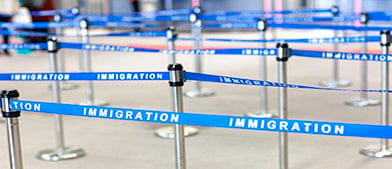What provisions are relevant here?
Paragraph 34K of the Immigration Rules states that if a decision on an application for permission to stay has not been made, any applicant who travels outside the Common Travel Area will have their application automatically withdrawn upon departure.
Section 3C of the Immigration Act 1971 states that if you make an in-time application for permission to stay in the UK, your immigration permission and related immigration conditions are automatically extended while your application (and any connected administrative review or appeal) is pending.
However, the statutory extension of permission under section 3C (often referred to as ‘section 3C leave’) will lapse if you leave the UK (even if you stay within the Common Travel Area).
What are the main things to consider?
You can keep your passport while your application is being processed. However, if you leave the Common Travel Area before receiving a decision on your application to stay, your application will be automatically withdrawn by the Home Office when you depart. While this withdrawal entitles you to a refund of any Immigration Health Surcharge you have paid, your application fee may not be refunded.
Also, if you have already started to benefit from section 3C leave, this will end at the time you depart the UK.
What happens if I try to re-enter the UK after my application has been withdrawn?
If you are a non-visa national, you may be able to return to the UK without getting entry clearance first, but if you do, it will be as a visitor. The rules for many in-country application types (including under work routes) normally do not allow switching status from visitor, and if you were in a work route before your departure, you would not be allowed to continue to work on your return.
You may need to regularise your status by staying outside the UK and making a fresh entry clearance application from abroad. This can be disruptive if you were previously working, as well as expensive if you have to pay for accommodation and other costs while you are waiting for your new visa.
In a more extreme scenario, if the Home Office has closed the route you were applying under (which we have seen happen with some of the Ukraine Scheme routes this year), you may not be able to make afresh application under it.
Will the Home Office take any action if I travel internationally?
Although paragraph 34K has been part of the Immigration Rules for some years, it has often not been enforced. However, we are aware of instances this year where the Home Office has issued notifications of withdrawal to some applicants. This means there is now a higher risk of enforcement than previously.
What should I do to avoid any problems?
If you have international travel plans in the lead-up to making an application to extend your stay in the UK, you may be able to complete your travel before submitting your application. Depending on your circumstances, you may be able to opt for a fresh entry clearance application instead.
Once an in-country application has been submitted, the most straightforward advice is not to travel outside the UK until it has been approved. If, however, an urgent need to travel arises, you should consider seeking immigration advice on the options that may apply to your individual circumstances.
If you have any queries about the topics covered in this article, please get in touch with a member of our Immigration team.
